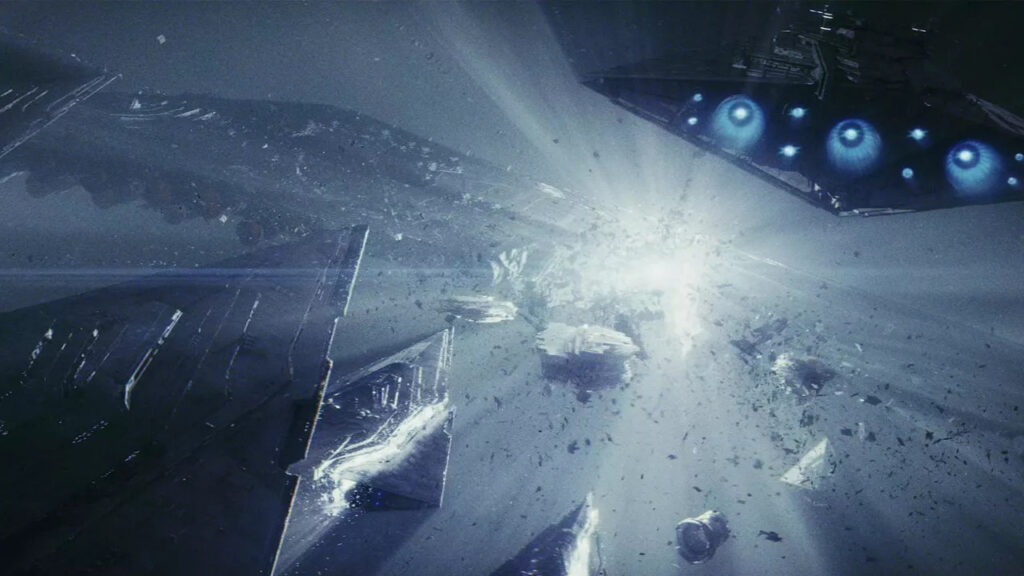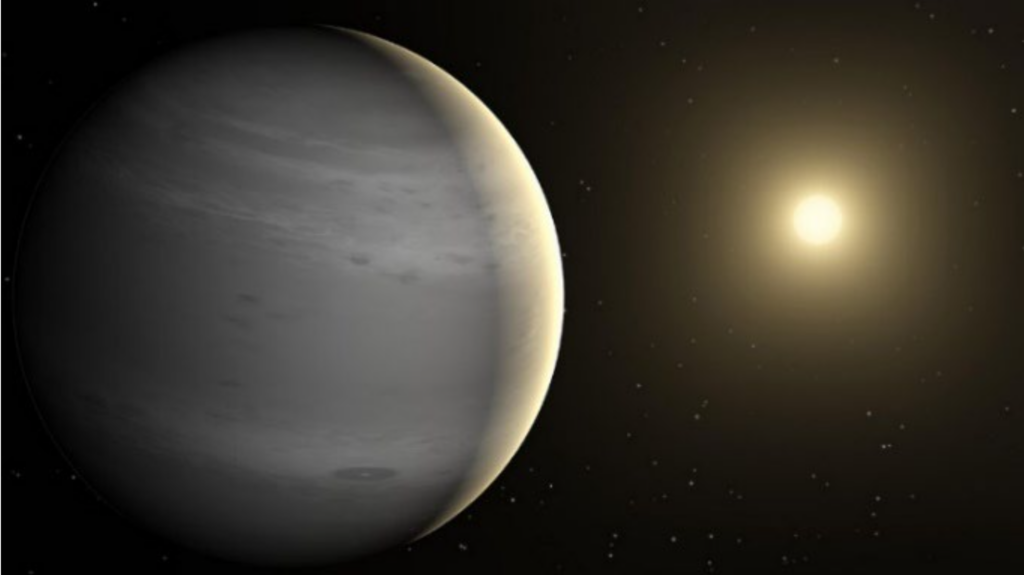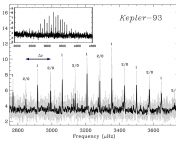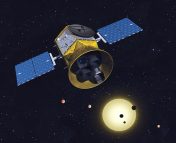Title: TESS Asteroseismic Analysis of HD 76920: The Giant Star Hosting an Extremely Eccentric Exoplanet
Authors: C. Jiang, T. Wu, A. D. Feinstein, et al.
First Author’s Institution:Status: Published in The Astrophysical Journal [open access]
by Josh Lee

Josh Lee is a fifth year math undergrad at UCLA. He first encountered Astrobites through a writing-focused astronomy course this year and has been a regular reader since. Though he’s not a science writer by trade nor an astronomy major, he enjoyed the class and decided to give guest writing a try! In his free time, he enjoys playing acoustic guitar, writing and publishing short stories, and reading historical fiction.
When I watched Star Wars: The Last Jedi in theaters, one scene imprinted in my mind for an admittedly nerdy reason. In the scene, Vice Admiral Holdo sacrifices herself to save the heroes by crashing her ship into an enemy fleet in hyperspace (at near light speed, essentially).
The collision annihilates the First Order fleet in spectacular cinematic fashion – and in complete silence. It was an awe-inspiring scene that challenged how sci-fi films notoriously include sound where none should exist: in space! But, it just so happens that even if we can’t hear anything from space, we can still observe the rumblings of faraway stars right from Earth.

In elementary school, I was taught that outer space is deafeningly quiet. There is no air for soundwaves to travel in, so if I were to float in the cosmic abyss and somehow stay alive, I wouldn’t be able to hear anything – not even a resistance cruiser smashing a fleet flagship at near light speed. But, turns out, we can “listen in” to vibrations on the surfaces of stars right here from Earth. In a star’s lifetime, pockets of ultra-hot gas heat up and rise to the surface, where it then loses heat to space, condenses, and sinks back into the star’s layers. This creates visible rumbles on the star’s surface – starquakes! Studying these quakes is a sub-field of astronomy called asteroseismology, and scientists have recently found a way to use it to uncover information about stars and the exoplanets they host. Faraway stars are incredibly difficult to make accurate observations about, so this paper demonstrating the usefulness of asteroseismology as an additional lens adds much needed resolution to our eyes on interstellar space.
Our paper by Jiang, et al. focuses on HD 76920, an orange star 600 light-years away from us. It has one known exoplanet, HD 76920 b. For the sake of sparing you reading “HD 76920” too many times, let’s call them the Big Orange and the Mini Orange, respectively. A previous paper from 2021 made predictions on the next time the Mini Orange would transit in front of the Big Orange based on estimates of the exoplanet’s orbital eccentricity, orbital period, mass, and semi-major axis. These estimates were made with imprecise data, so thick margins for error clouded the paper. Turns out, their prediction was indeed incorrect, and no transit was observed when the next one was predicted.

Clearly, a piece of the puzzle was missing from the 2021 estimates, making it difficult to pin down the trajectory of the Mini Orange. Jiang, et al. combined asteroseismology with the 2021 observations to better understand the geometry of the Big Orange and its planet’s orbit. The hero of this effort is TESS, the exoplanet-searching satellite telescope launched by NASA in 2018. TESS captured tons of brand-spanking new images of the Big Orange, which were detailed enough to apply asteroseismological analysis on it for the first time.

Aided by computers and armed with the powerful eyes of TESS, Jiang’s teams rolled out the most promising search yet for the missing puzzle piece. The first eureka moment came by using asteroseismology, which confirmed that the Big Orange was a red giant. Meaning, the team could confidently say that the star burns a shell of hydrogen with an unignited helium core – all without ever directly having peered into the star! Knowing the composition of a star and its internal processes helps build further conclusions about its characteristics (as in the case of this 2008 study), including the star’s size, mass, age, surface gravity, and density. So, from there, the teams narrowed the 2021 calculations on the Big Orange’s characteristics to more precise numbers for the first time in two years. The margins of error on these measurements were the lowest they have ever been for the Big Orange.
The Mini Orange received refined measurements, too. The exoplanet’s new semi-major axis, mass, and orbital pericenter had a lower level of uncertainty than before thanks to better calculations on the Big Orange. This sequence of events was ultimately the goal of this paper: to show that TESS’s observations, combined with asteroseismology, could lend better knowledge about distant stars and their planets.
Scientists have never been remotely near the Big Orange, and none alive today ever will be. And yet, the technology and methods developing on the ground today seem to inch us ever closer. TESS and asteroseismology are just one hand that helped lift the interstellar carpet to reveal a piece missing from a star-sized puzzle. The puzzle is far from complete, and each new discovery begs new questions for us to explore and wonder at the wild possibilities of our future. Though travel in hyperspace and lightsabers may remain in movies, with developments like the one made in this paper, our understanding of the universe feels just a little more “sci” and a little less “fi.”
Featured image credit: NASA
Astrobite edited by Ali Crisp.




